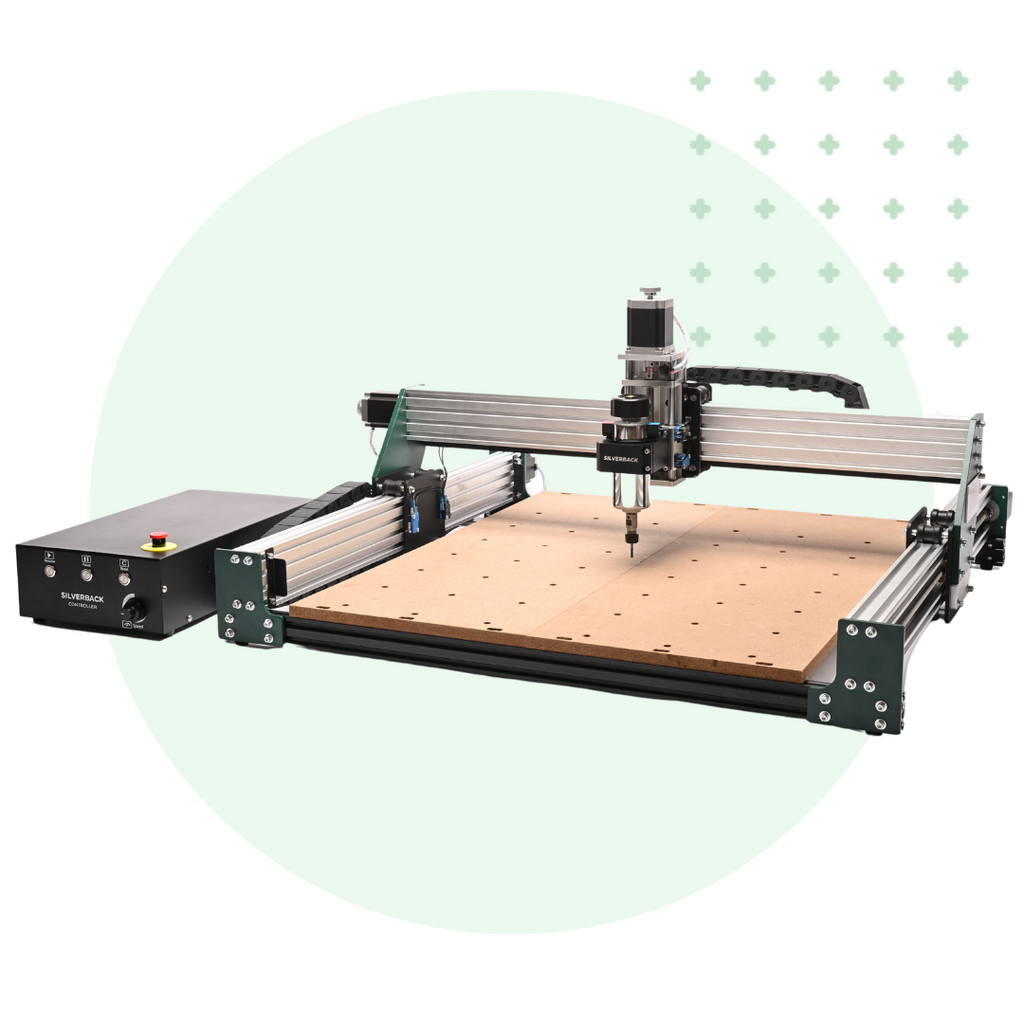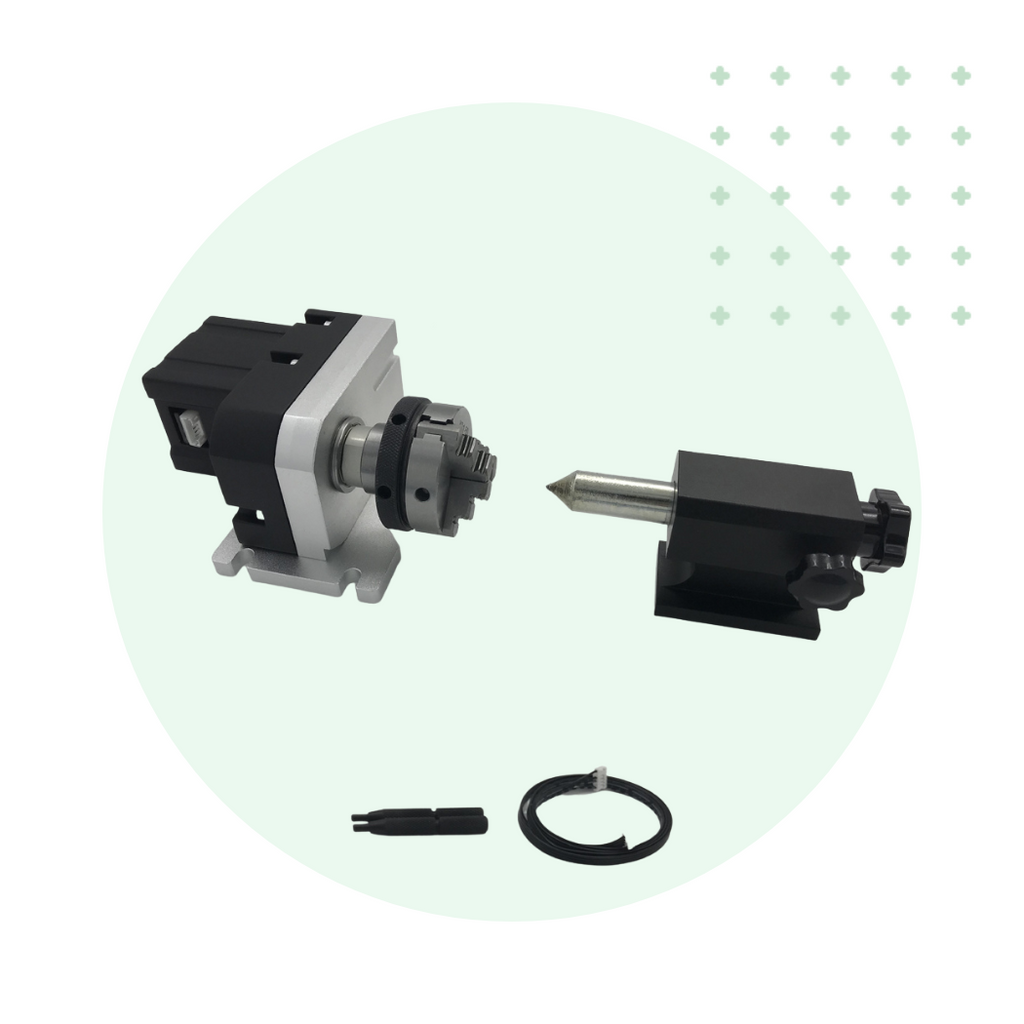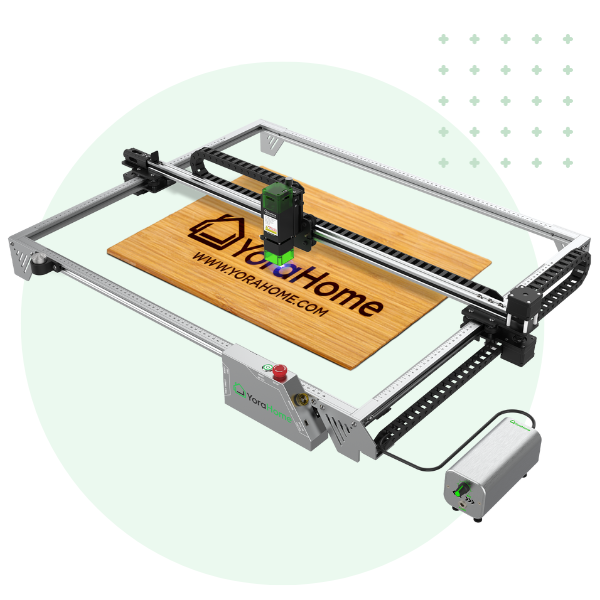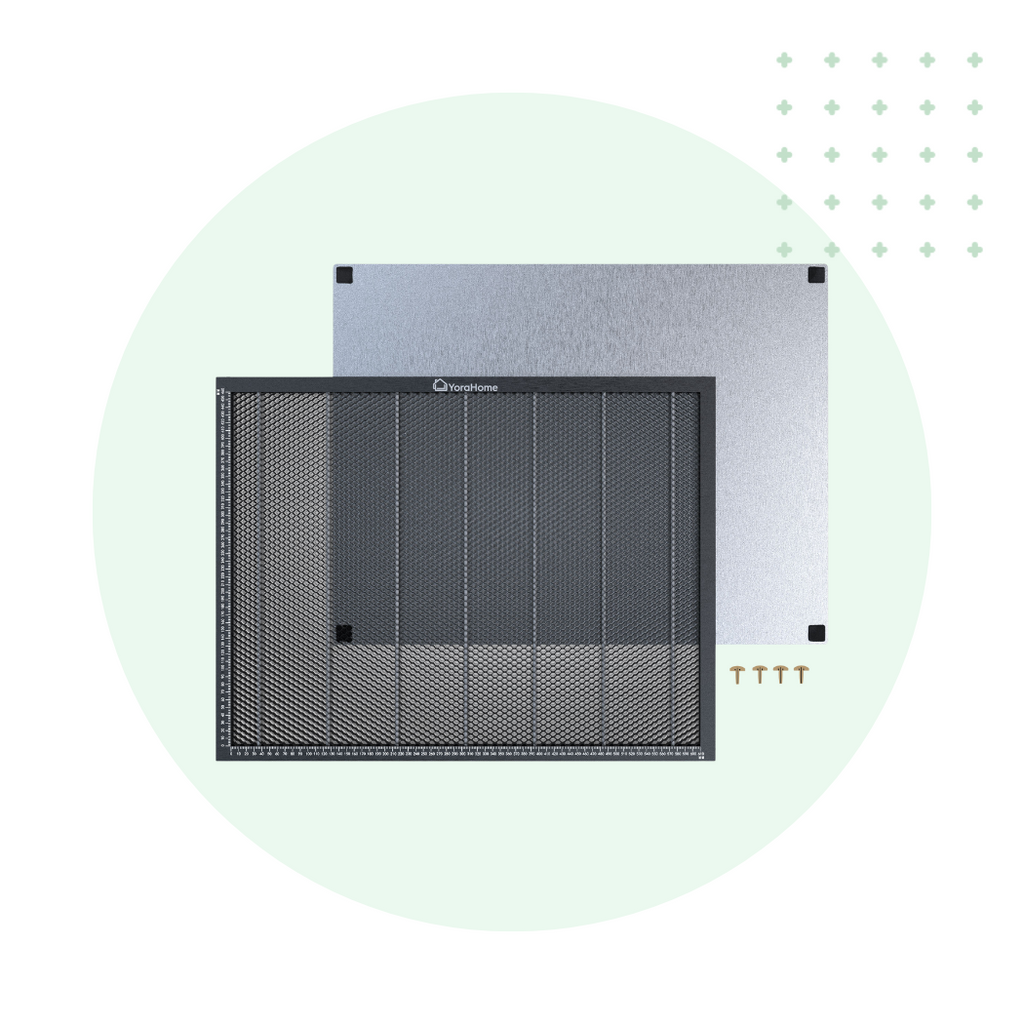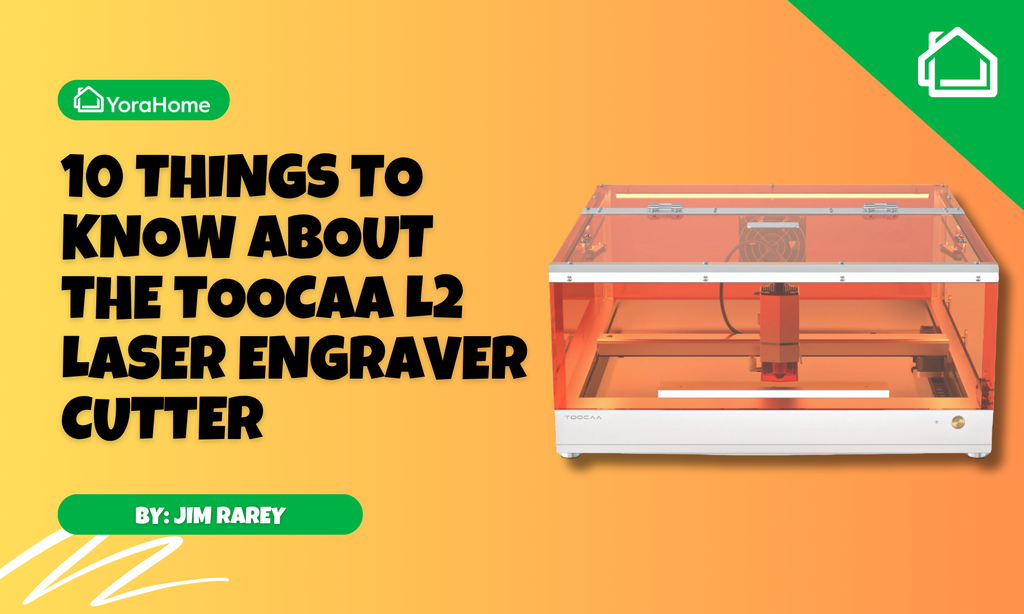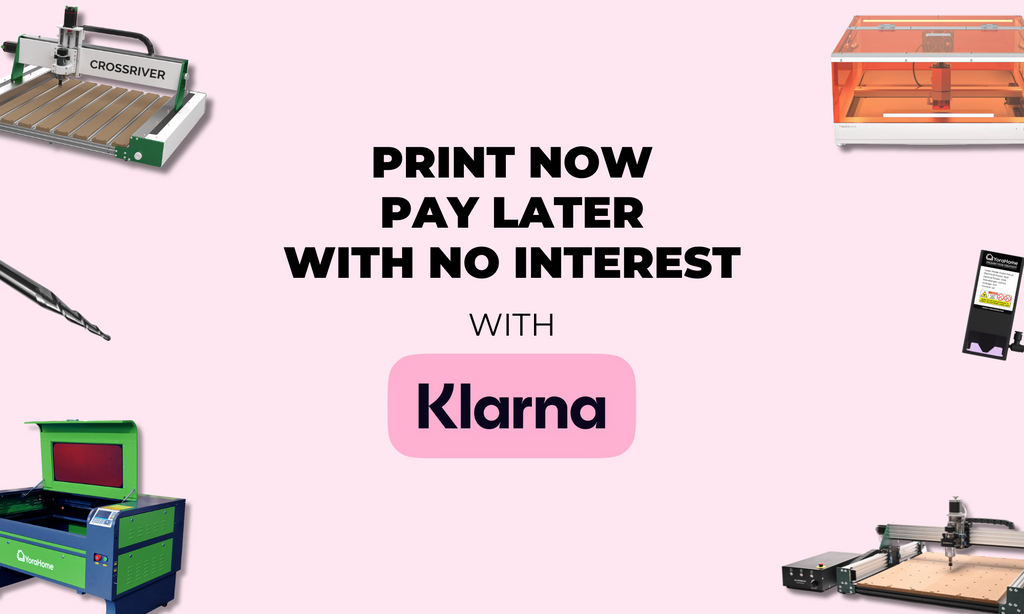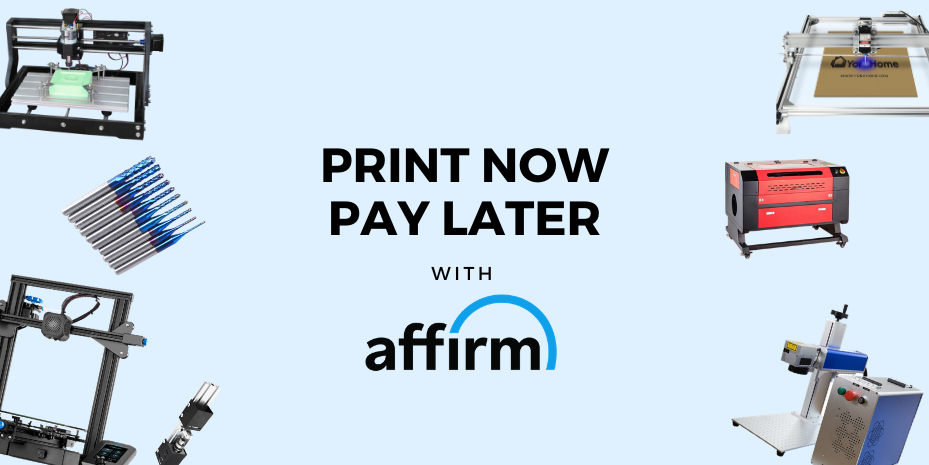How To Laser Engrave Glass

I am always keen to try new stuff with my YoraHome machines. Yes, I’m greedy, I have the YoraHome 6550 and the YoraHome 3019-Pro and I had wondered if lasering glass would be an option, to create an etched effect.
I’d seen a few posts on the web about having various degrees of success, so my plan was to get all the bits and pieces I needed ready to try it out over the weekend.
So, I ordered some matt vinyl and some etching cream and luckily I had acquired a ridiculous number of small glass clip frames at an auction a few months ago, thinking they were acrylic and that I’d carve them with my Yora 3018. Only when I dropped a scrap piece did I realize it was glass, so its been stashed since then, but now was the time to use it.
Basic principles first, I set up the laser with the glass on top of some scrap wood on top of my YoraHome Mini Aluminium Alloy Lifting Platform which allows me to raise the material as required, to approximately 1.75 inches from the glass and focused to the smallest dot I could manage.

I then imported my “usual” trial image into LaserGRBL and adjusted slightly on the contrast to make the image as sharp as I could.

I wanted to be able to leave the majority of my settings the same for each test – less things changing, less options to forget what did and didn’t work, so I measured my glass pieces and set the size of the design to be 100 mm square, engraving speed 300 mm/min and S-Max of 15000. One of the best things about the Yora CNC Laser Engraving Machine 6550 is the ability to change the size of your work up to a massive 65 x 50 cm, but most things I do are smaller than that.

Once happy with these settings I pressed “Create” and it was ready to have the power settings tried out.

I always find it easiest to start a new trial with simple settings, therefore :
Power 1.0
Linear 2.0
Rapid 1.0
And when the laser ran, it looked as if it was really working, could I be so lucky that the first try worked – Nope!
So, the dirty brown marking had lasered a beautiful rendition of the rose on the scrap wood, but barely made a mark on the glass – only the very thickest lines in the design were even partly visible.

Not dissuaded I wanted to try simple options still, so reset:
Power 2.0
Linear 1.0
Rapid 1.0
I didn’t change any other settings, new piece of glass on the other corner of the scrap and away……


This time more of a dirty mark was left on the glass rather than anything else and this wasn’t the effect I was aiming for.
Moving on to the other alternatives, I thought I’d try the vinyl option. My other half Shaun tells everyone if he can’t hit it with a hammer he can’t do it, but he did vinyl wrap our kitchen cupboard doors when we moved into this house, so I’d seen how easy (hahaha) it is to put vinyl on something without lots of creases and bubbles.
I don’t think he’d have been proud of my efforts, but it was just for a test, so once the vinyl was on as best as I could manage, I was thinking of new settings etc.
I had a flash of brilliance at this point, they don’t happen too often, but this was a fantastic one – knowing that I wanted to create a stencil with the vinyl, I didn’t need to “completely” cut out the shape, only the outlines – look out vectoring here we come!

In amongst all my crafting stuff, I knew I had a pokey thing, for “weeding”, as I’m told its called, the bits out to leave the stencil behind without doing any damage to the design, of course I couldn’t find it so I used a very small screwdriver, like you fix spectacles with and removed the bits.
OK, my flash of brilliance was only after I’d started to burn it all out, but stop and start again, but it was still a great idea if a bit late.

Next great idea, I was on a roll, was to get the other version with spray paint ready to burn the stencil into. I won’t bore you with all that, but obviously had to go back to line to line to burn out the whole design.

Personally, I really liked how this looked and could have left it just like this, but the original plan was to etch the glass, so I continued.
The instructions for the etching cream were quite explicit – wear gloves & safety glasses and do not get it on your skin. It said stir well and apply an even thickness over the design, as you can see it wasn’t completely even over the vinyl stencil and it wasn’t any better over the paint.

After 1.5 mins, the instructions said move it about a bit with a paintbrush and again after 3.5 minutes, then after 5, wash it off. I followed the instructions and when I washed it off, I didn’t think anything had happened, however if you ever want to look through frosted glass, put water on it, it appears clear, so once the 2 pieces were dry, they looked a bit smokey – ish. Time to remove the vinyl and the paint.

The first picture was the vinyl version, and I’d found the pokey thing which is apparently a “retractable pokey tool” to remove the little bits of vinyl within the stencil. Word to the wise if you get one of these, the pokey bit is very sharp and won’t only scratch your material if you’re not very careful, it retracts for very good reason.
I left some of the paint on so I was certain which was which, as you can see they have both come out around the same quality. So, it was clear that using etching cream in combination with either paint or vinyl worked. But etching cream is quite expensive, and the paint took ages to get off using pure alcohol. There had to be another way………..

The issue being with glass tis hat the laser beam either reflects off the glass or travels straight through it. To stop that happening, I used some kids poster paint, it comes in big bottles from the supermarket for pennies and generously daubed it over the rear of the glass.

I turned the power back up and speed down:
Power 2.0
Linear 0.3
Rapid 1.0

The best bit about using the poster paint is that its water based so a quick rinse under the tap and tra-daaaah, look at this :

The opportunities with the YoraHome machines are endless, I can’t believe how many different materials can be lasered with it and carving with the 3018 is only limited by what I can get my hands on, the only real boundaries are your imagination.
If you haven’t tried lasering glass yet, follow the hints above and see what you can turn out. I may need to get the Yora RotatePro Module For Column & Cylinder Engraving so that I can do glasses and bottles and flasks and hot drink cups and and and…..
Get The Freshest Content
Straight To Your Inbox
Join over 3,000 creators who receive premium content, exclusive discounts, and all the must-know info on a weekly basis.
